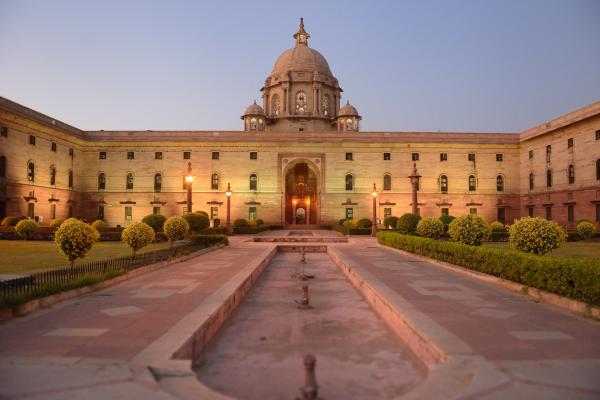
In India, a parliamentary system of government is followed in which the Prime Minister becomes the acting head of the government. He also serves as the chief advisor to the Indian President and the head of the Council of Ministers. In order to become the Prime Minister of India, the candidate has to be a member of the Rajya Sabha or the Lok Sabha, and also the leader of a political party with a simple majority in Lok Sabha. Till date, India has seen 14 Prime Ministers so far, with Pt. Jawaharlal Nehru being the first Prime Minister appointed in 1947. In this onHOWTO article, we are going to give you complete information about the Prime Minister of India and about how is the Prime Minister elected in India.
Eligibility criteria
According to the Article 84 of the Indian constitution, the Prime Minister should fulfill the following eligibility criteria:
• They should have Indian citizenship
• They should be a member of either of the two houses of parliament, the lower Lok Sabha or the upper Rajya Sabha
• They should be at least 25 years of age
• They should not hold office of profit under the State or Central government

The PM election process
Election of the Indian Prime Minister is a long and complicated process. Here is the step by step procedure:
- Election Commission of India is an autonomous authority of constitution that is responsible for organizing general elections every 5 years. Generally, these general elections are held in a number of phases. Through these general elections, 543 members of Parliament are elected in the Lower House known as the Lok Sabha. These members of Parliament belong to different political parties.
- Now, the President of India comes into the equation. He has the constitutional power to invite a Lok Sabha leader of the winning party to form a government. Party with maximum number of seats in the Lok Sabha hold a meeting and decide a person to become the Prime Minister.
- The winning party has to prove its majority in the Lok Sabha, which means that it should have more than 50% of its members present for the voting in favor of the selected candidate. Once their majority is proved, the Prime Minister is selected.
- The party proving its majority selects a leader and recommends him to the President to make them the country’s Prime Minister. The President then appoints him as the PM. A ceremony is held in the Vigyan Bhavan of the Rashtrapati Bhavan, where the newly elected Prime Minister takes their oath. It is mandatory for all the members of the Parliament to attend the ceremony.

Functions of an Indian Prime Minister
Once the Prime Minister is elected, they have the following functions to perform:
- To aid and advise the President of India
- To distribute government works to different offices and ministries
- To schedule and attend House of Parliament sessions
- To answer questions of the MPs
- To represent the country in different national and international meetings, organizations and delegations
- To address the nation on different issues of importance
- To serve as the head of the Department of Space, Department of Atomic Energy, Nuclear Command Authority, NITI Aayog, and the Ministry of Pensions, Personnel and Public Grievances

Women are eligible for the position of Prime Minister in India. However, only one has ever been elected. She was Indira Ghandi and was the second youngest person to be elected to the position at 48 years old. The youngest was Rjiv Ghandi who was 40 years old when he took over the position after his mother's assassination in 1984. He too was assassinated in 1991, although after he left office.
If you want to read similar articles to How Is the Prime Minister Elected in India, we recommend you visit our Culture & Society category.